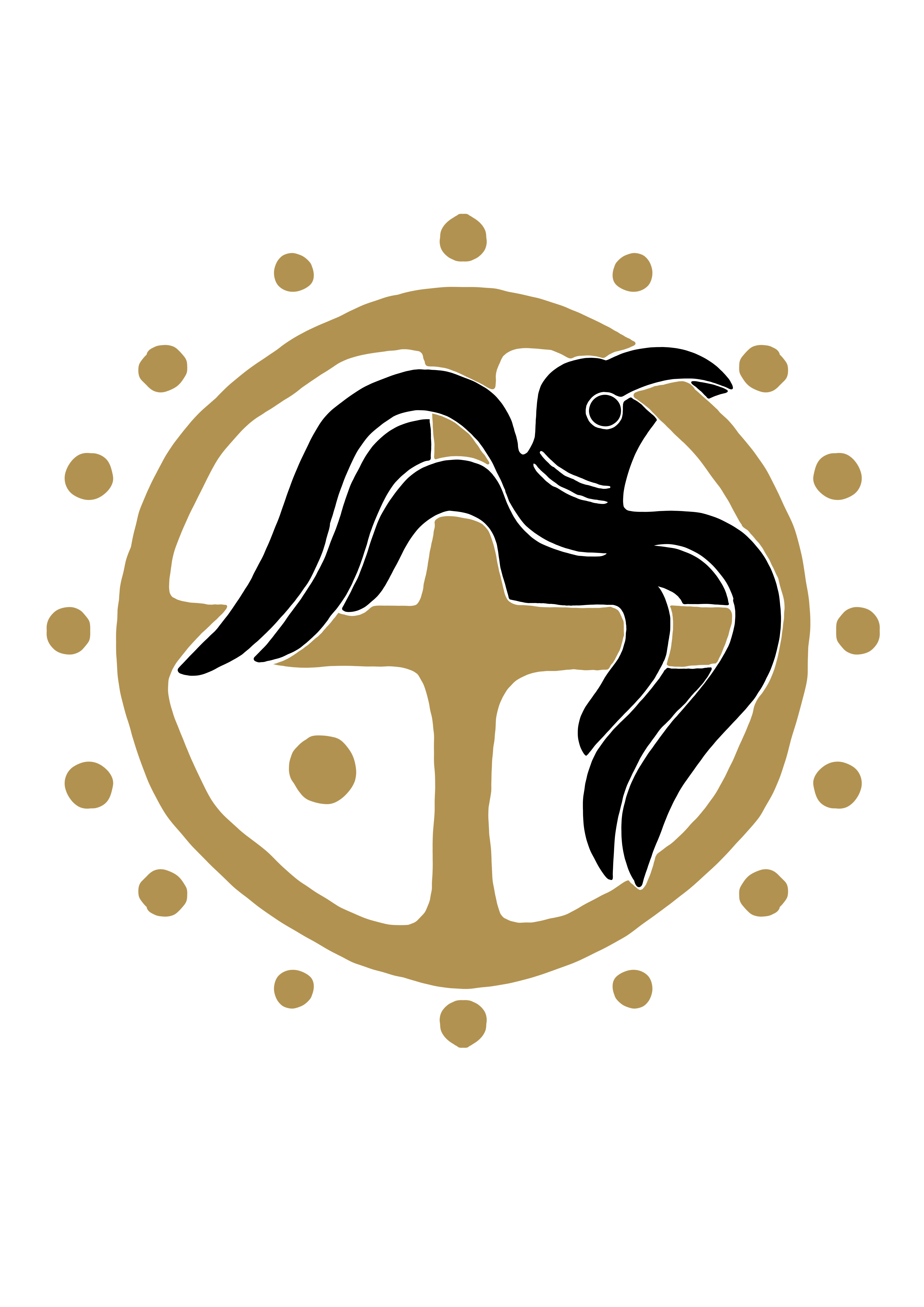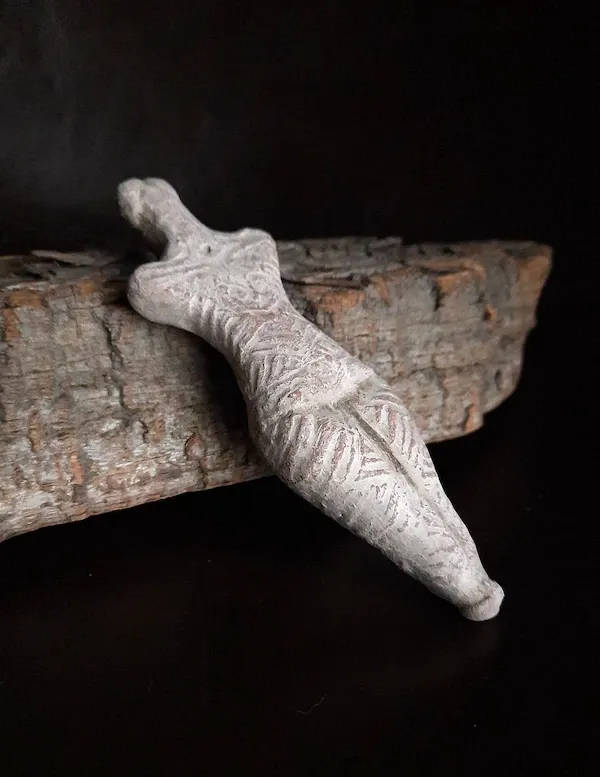Prehistoric Great Mother Goddess Idol – Handmade Danube Culture Terracotta Figurine, Tattooed Body
Prehistoric Great Mother Goddess Idol – Handmade Danube Culture Terracotta Figurine
This unique handcrafted figurine represents the ancient Great Mother Goddess, inspired by the powerful imagery of the Danube culture and Cucuteni–Trypillia civilization (c. 5500–2750 BCE). Carefully sculpted from fired clay with a natural terracotta finish, this 13 cm idol resembles original museum artifacts found across Romania, Moldova, and Ukraine.
Scholars believe such Neolithic Venus figurines depict tattooed or ritually painted bodies, often covered in ochre—a sacred pigment used since Paleolithic times. The ochre-patina effect on this piece echoes that prehistoric symbolism, associated with fertility, rebirth, and the cycle of life.
A true collector’s item from the Z-rune Pagan Arts Workshop, this Mother Goddess idol serves beautifully as a historical artifact replica, altar piece, or symbolic gift for anyone connected to Old Europe spirituality, Wicca, or goddess worship.
Product Details:
- Inspiration: Danube / Cucuteni–Trypillia Goddess
- Other Names: Neolithic Venus, Great Mother Goddess
- Material: Fired Clay (Terracotta)
- Height: 13 cm
- Patina: Antique-style natural finish
- Use: Home altar, sacred space, collector display
- Made by: Z-rune Pagan Arts Workshop
- Each piece is 100% handmade and one-of-a-kind
Historical Note:
The Danubian culture was the first major agrarian society in Central and Eastern Europe, flourishing along the banks of the Danube River. This expansive civilization developed advanced art, long-distance trade, and some of the largest Neolithic settlements ever discovered—some housing up to 46,000 people.
Ochre—used by ancient peoples on every continent—played a sacred role in ritual, art, and daily life. It was used to paint the body, dye skins, protect from the sun, staunch wounds, and connect with the spirit world. Neolithic burial sites suggest it symbolized rebirth or blood, tying it closely to Goddess worship.
Perfect for:
- Goddess & pagan spirituality practitioners
- Historical art collectors
- Wiccan and Norse altar setups
- Lovers of ancient cultures and sacred symbolism
- Unique handmade gifts with deep meaning
Tags:
OldEuropeGods, PrehistoricGods, MotherGoddess, PalaeolithicArt, NeolithicVenus, NorsePaganAltar, WiccanGods, GoddessIdol, PrehistoricFigurine, OchreArt, CeramicIdol, HandmadeTerracotta, AncientCeremony
#MotherGoddess #Terracotta #Figurine #OldGods #PaganArt #AltarIdol #CucuteniCulture

